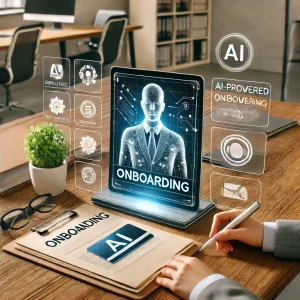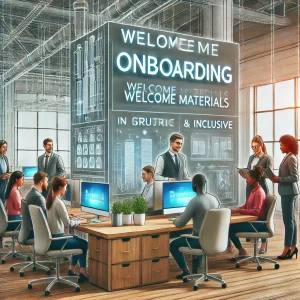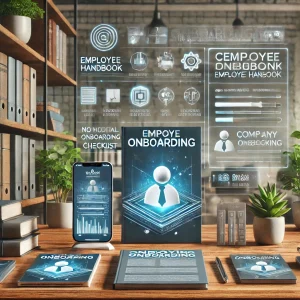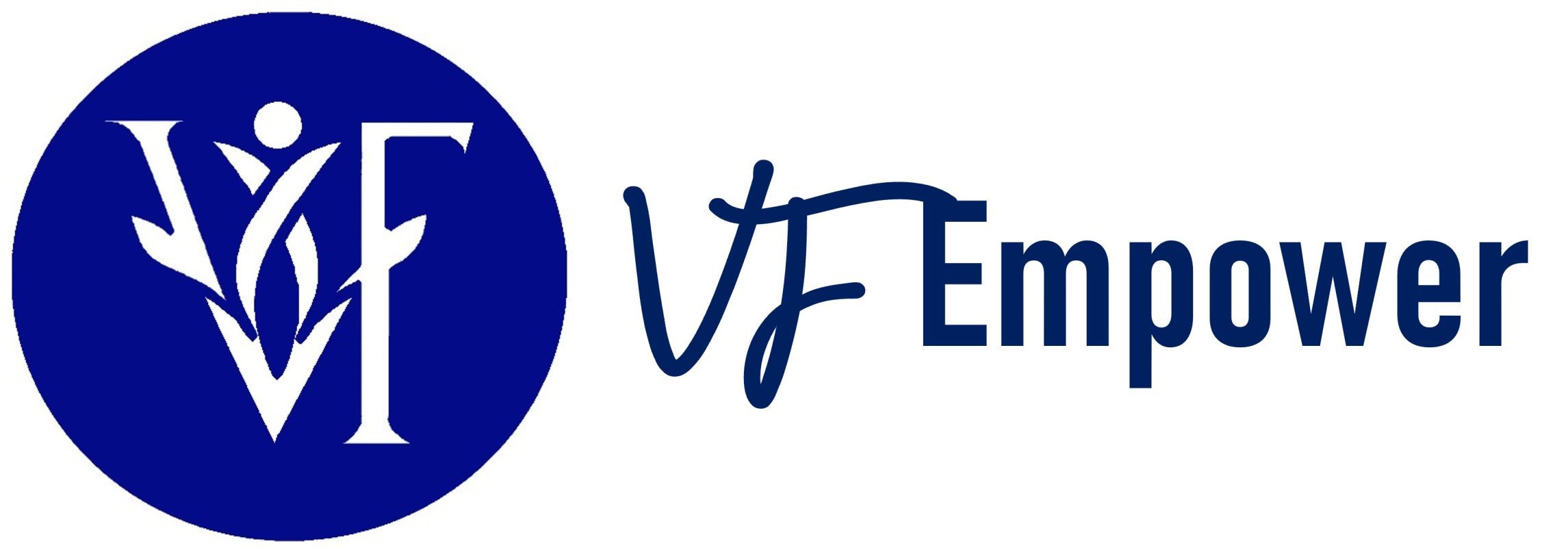Table of Contents
- 1 Onboarding Costs and Employee Retention – Why Investing in Onboarding Saves Money
- 2 Why Employee Onboarding in 2025 is More Critical Than Ever
- 3 Trend 1: AI in Onboarding – The Future of Employee Experience and HR Trends
- 4 Trend 2: Structured Onboarding in 2025 – How HR Professionals and Managers Must Work Together
- 5 Trend 3: Remote Onboarding in 2025 – Engaging Virtual Employees and Reducing Turnover
- 6 Trend 4: Feedback-Driven Onboarding – How HR Professionals and Managers Can Offer Better Employee Experience
- 7 Trend 5: DEI (Diversity, Equity, and Inclusion) in Onboarding – Creating a More Inclusive Employee Onboarding Program for New Hires
- 8 Trend 6: Onboarding Technology – Beyond AI, What Other Digital Tools and Onboarding Software Matter?
- 9 Trend 7: Gamification in New Employee Onboarding – How AI is Transforming the Onboarding Process
- 10 Trend 8: Leadership Involvement in Effective Onboarding Process – Why Executives and Managers Must Be Proactive
- 11 Trend 9: Sustainability and Corporate Responsibility in Onboarding – Aligning Employee Experience with ESG Goals
- 12 Trend 10: Continuous Onboarding – Extending the Employee Journey Beyond the First 90 Days
- 13 The Future of Employee Onboarding 2025 and Beyond – Emerging Trends to Watch
- 14 Final Thoughts: Why Successful Onboarding in 2025 is the Key to Long-Term Employee Success
- 15 🚀 Ready to Transform Your Onboarding Process? Start Here!
Onboarding Costs and Employee Retention – Why Investing in Onboarding Saves Money
Why Poor Employee Onboarding is Expensive
Many companies underestimate the financial impact of ineffective onboarding. Studies show that a poor onboarding experience increases turnover rates, leading to higher hiring and onboarding costs per employee. As organizations look to improve their processes, they must align with bold onboarding trends in 2025, which focus on structured, engaging, and retention-driven onboarding programs to reduce employee churn.
📌 Employee Onboarding Statistics for 2025: The Cost of Poor Onboarding
✔ Organizations lose up to 20% of new hires within the first 45 days due to poor onboarding.
✔ Replacing an employee costs 1.5x to 3x their annual salary.
✔ Companies that invest in structured onboarding reduce turnover by up to 50%.
🔎 Why Investing in Employee Onboarding Saves Money
- Higher retention means lower recruitment and training costs.
- Better onboarding leads to improved new hire productivity.
- Engaged employees contribute more effectively to company goals.
LinkedIn found that investing in a structured onboarding experience reduced turnover by 25%, leading to millions in cost savings annually.
Why Employee Onboarding in 2025 is More Critical Than Ever
Employee onboarding process is rapidly evolving. Traditional onboarding programs—where new hires filled out paperwork, attended a one-time HR orientation, and were left to “figure things out”—are no longer effective. In 2025 and beyond, onboarding must be:
✔ AI-driven and digital
✔ Longer and structured
✔ A company-wide responsibility, not just HR’s
✔ Personalized and role-specific
✔ Focused on employee experience and retention
🔎 What makes 2025 different?
🔹 Shift in employee expectations – New hires feel frustrated with outdated onboarding practices. They want AI-powered onboarding software, mobile-friendly training and structured onboarding programs tailored to their role.
🔹 AI in onboarding is mainstream – Companies are automating onboarding processes using AI-driven tools that provide personalized learning experiences.
🔹 Remote work is still growing – The rise of remote onboarding requires HR professionals and managers to create engaging digital onboarding programs.
🔹 Retention is at risk – Poor employee onboarding increases turnover rates, leading to higher costs per employee and lower workforce productivity.
📌 What’s at stake?
✔ Poor onboarding costs companies millions. The cost per employee turnover can be up to 3x their salary.
✔ Strong onboarding increases retention by up to 82% (Gallup).
✔ Employee onboarding statistics for 2025 show that companies with great onboarding programs see higher employee satisfaction and productivity.
So, how can HR leaders, executives, and managers create an effective onboarding process?
The answer lies in understanding the top 10 onboarding trends in 2025.
Trend 1: AI in Onboarding – The Future of Employee Experience and HR Trends
Why AI is Transforming Employee Onboarding in 2025
AI is no longer just a nice-to-have tool—it is fundamentally changing how HR professionals, managers, and executives onboard new hires. In 2025 and beyond, companies are using AI in onboarding to create smarter, faster, and more personalized experiences for employees.
📌 How AI is Improving the Employee Onboarding Process in 2025
 ✔ AI chatbots provide instant support for new hires, answering FAQs about policies, training, and benefits.
✔ AI chatbots provide instant support for new hires, answering FAQs about policies, training, and benefits.
✔ Machine learning customizes onboarding programs, adapting to individual employee roles and experience levels.
✔ AI-powered retention analytics predict which employees may disengage early, allowing HR teams to take proactive action.
✔ Automated document processing and compliance tracking, reducing administrative burdens on HR professionals.
🔎 Example: IBM has implemented AI-driven onboarding assistants that guide new employees through company culture, training programs, and administrative tasks, ensuring a smoother transition.
What’s Next? The Future of AI in Onboarding New Hires Beyond 2025
AI is just getting started in onboarding. As we move beyond 2025, companies will integrate AI with other cutting-edge technologies to create even more seamless and engaging experiences.
📌 AI-Driven Onboarding Innovations to Watch
✔ AI-powered mentorship matching – AI recommends mentors for new hires based on learning preferences and career goals.
✔ AI-powered video training analysis – AI assesses how engaged employees are in video-based onboarding programs.
✔ AI-driven gamification – AI personalizes onboarding challenges, rewarding employees based on their learning speed and progress.
💡 Example: Amazon is currently testing AI-integrated onboarding simulations, where employees can experience job-specific training before officially starting work.
✅ Key Takeaway: AI is no longer just an automation tool—it is now a strategic partner in onboarding, ensuring a more efficient, personalized, and retention-focused experience for new hires.
Trend 2: Structured Onboarding in 2025 – How HR Professionals and Managers Must Work Together
The state of employee onboarding in 2025 is moving towards long-term, structured onboarding programs that last beyond the first 30 days.
📌 Why Structured Onboarding Programs Improve Employee Retention
✔ New hire retention rates improve by 50% when onboarding lasts at least 90 days.
✔ HR professionals create onboarding frameworks, but managers and supervisors execute them.
✔ A structured onboarding process ensures new employees feel supported beyond the first week.
🔎 Key Components of a Structured Onboarding Program
✔ HR professionals design company-wide onboarding processes, but managers tailor them for their teams.
✔ New hires feel engaged through regular mentorship and goal setting.
✔ A structured onboarding experience ensures employees are trained, supported, and retained.
💡 Best Practices for Structured Onboarding in 2025
✅ Managers should provide job-specific onboarding tasks beyond HR’s general orientation.
✅ Executives should reinforce company culture and long-term career opportunities.
✅ HR should track new employee progress at the 30, 60, and 90-day marks.
Trend 3: Remote Onboarding in 2025 – Engaging Virtual Employees and Reducing Turnover
The rise of remote work has created a new challenge for HR teams and business leaders: how to make remote onboarding effective?
📌 Why Remote Onboarding Matters in 2025
✔ Poor onboarding experience is a major reason for remote employee turnover.
✔ HR professionals and managers must work together to ensure remote employees feel included.
✔ Onboarding technology and digital learning tools make virtual onboarding more engaging.
🔎 Best Practices for Remote Employee Onboarding
✅ HR professionals should use digital onboarding software to provide remote-friendly training.
✅ Managers should schedule regular virtual check-ins to support new hires.
✅ Executives should create an inclusive remote culture by hosting team-building sessions.
🚀 Companies like Microsoft and Shopify have invested in remote onboarding strategies to improve employee engagement and retention.
Trend 4: Feedback-Driven Onboarding – How HR Professionals and Managers Can Offer Better Employee Experience
Why Feedback is Critical for a Great Onboarding Experience
In 2025 and beyond, onboarding is no longer a one-way process where HR professionals deliver training and move on. Instead, the most effective onboarding processes are feedback-driven and involve continuous two-way communication between new hires, managers, and HR teams.
📌 What Employee Onboarding Statistics Tell Us About Feedback-Driven Onboarding
✔ Companies that collect employee feedback during onboarding see a 63% increase in engagement.
✔ Regular check-ins at 30, 60, and 90 days improve employee retention rates by up to 50%.
✔ AI-powered feedback tools allow HR and managers to track new hire progress in real-time.
🔎 Why Traditional Onboarding Feedback Methods Don’t Work in 2025
- Annual employee surveys are outdated—feedback must be collected in real time.
- HR cannot manage feedback alone—managers and team leads must actively engage with new hires.
- Generic feedback doesn’t drive action—companies must track data-driven insights from onboarding technology.
Best Practices for Feedback-Driven Onboarding
✅ HR professionals should implement AI-powered feedback tools to monitor new hire sentiment.
✅ Managers must conduct structured feedback sessions at 30, 60, and 90 days.
✅ Executives should review feedback insights to ensure onboarding programs align with business goals.
💡 Example: Salesforce uses real-time onboarding analytics to measure how engaged new hires feel, allowing managers and HR teams to make immediate improvements to the onboarding process.
Trend 5: DEI (Diversity, Equity, and Inclusion) in Onboarding – Creating a More Inclusive Employee Onboarding Program for New Hires
Why DEI is a Top Employee Onboarding Trend in 2025
 Diversity, Equity, and Inclusion (DEI) is no longer just a corporate initiative—it’s a core part of the employee onboarding experience. In 2025, HR leaders, managers, and executives must ensure that new hires feel welcomed, respected, and valued from Day 1.
Diversity, Equity, and Inclusion (DEI) is no longer just a corporate initiative—it’s a core part of the employee onboarding experience. In 2025, HR leaders, managers, and executives must ensure that new hires feel welcomed, respected, and valued from Day 1.
📌 Why DEI-Focused Onboarding Programs Matter in 2025
✔ Companies with inclusive onboarding programs report higher employee satisfaction and retention.
✔ New hires feel more engaged when mentorship programs include diverse leadership.
✔ HR professionals and managers must be trained to ensure that onboarding processes don’t unintentionally exclude diverse hires.
🔎 Common DEI Challenges in Employee Onboarding
- Lack of accessibility – Not all onboarding materials are inclusive (e.g., lack of closed captioning for training videos).
- Bias in onboarding processes – Some new hires feel unheard or disconnected due to implicit biases in training programs.
- No mentorship for diverse employees – New hires from underrepresented backgrounds struggle without dedicated support.
Best Practices for Inclusive Onboarding in 2025
✅ HR professionals must ensure accessibility in all onboarding materials (language support, screen readers, closed captions).
✅ Managers should receive DEI training to support new employees from all backgrounds.
✅ Executives should prioritize diverse mentorship programs to help new hires integrate faster.
💡 Example: Google introduced a DEI-driven onboarding program that matches new hires with mentors from similar backgrounds, improving retention and engagement rates across diverse employee groups.
Trend 6: Onboarding Technology – Beyond AI, What Other Digital Tools and Onboarding Software Matter?
Why HR Leaders Need a Full Digital Onboarding Strategy
While AI is a game-changer in onboarding, it is not the only digital tool that matters. Companies in 2025 and beyond are leveraging a mix of onboarding technologies to ensure a structured, accessible, and flexible onboarding experience.
 📌 Non-AI Digital Onboarding Tools That Are Essential in 2025
📌 Non-AI Digital Onboarding Tools That Are Essential in 2025
✔ Cloud-based onboarding platforms – Automate document management, benefits enrollment, and compliance tracking.
✔ Mobile-first onboarding apps – Enable new hires to complete onboarding tasks via their phones, improving accessibility.
✔ Self-service HR portals – Allow employees to access onboarding resources, training materials, and policies at any time.
✔ E-learning platforms – Provide structured, role-based training with interactive learning experiences.
✔ Digital engagement surveys – Collect real-time feedback on onboarding effectiveness, helping HR improve the process.
🔎 Example: Companies like Workday and BambooHR have integrated mobile-friendly onboarding solutions that allow employees to complete paperwork, track onboarding milestones, and access training materials from their smartphones.
How Companies Can Leverage Onboarding Technology Effectively
📌 Best Practices for Digital Onboarding in 2025
✅ Use cloud-based onboarding systems to ensure HR processes are automated and scalable.
✅ Ensure mobile-friendly onboarding experiences, making it easy for employees to engage from anywhere.
✅ Integrate multiple onboarding tools into one seamless platform, avoiding information silos.
💡 Example: Microsoft is using mobile-first onboarding to help remote employees complete training, compliance, and company integration entirely from their smartphones.
✅ Key Takeaway: AI is just one part of a broader digital onboarding strategy—companies must integrate various onboarding technologies to provide a seamless, flexible, and employee-friendly experience.
Trend 7: Gamification in New Employee Onboarding – How AI is Transforming the Onboarding Process
Why Gamification is One of the Biggest Onboarding Trends in 2025
Traditional employee onboarding processes often feel overwhelming and tedious, leading to low engagement among new hires. To combat this, HR professionals and managers are leveraging AI-driven gamification strategies to make onboarding more interactive, engaging and effective.
📌 How Gamification Improves the Onboarding Experience
✔ New hires feel more motivated when onboarding tasks involve game-like elements.
✔ AI-powered leaderboards and challenges encourage healthy competition and active participation.
✔ Gamified onboarding programs increase knowledge retention and improve employee training success rates.
🔎 Why Traditional Onboarding Methods are Ineffective in 2025
- One-time orientations do not improve employee retention.
- Overloaded training sessions lead to poor onboarding experiences.
- Lack of engagement in onboarding causes new hires to disengage early.
Best Practices for Gamified Onboarding in 2025
![]() ✅ Use AI-driven gamification software to create interactive onboarding modules.
✅ Use AI-driven gamification software to create interactive onboarding modules.
✅ Incorporate badges, rewards, and point-based challenges to make onboarding engaging.
✅ Track onboarding performance through gamification dashboards for better analytics.
💡 Example: IBM introduced an AI-powered onboarding game where new employees complete missions and earn points for task completion. This resulted in higher engagement, faster training completion, and better retention rates.
Trend 8: Leadership Involvement in Effective Onboarding Process – Why Executives and Managers Must Be Proactive
Why Onboarding is Not Just HR’s Responsibility
In 2025, one of the biggest mistakes companies make is assuming that onboarding is only an HR function. Instead, successful onboarding requires the involvement of executives, line managers, and direct supervisors to ensure new hires feel welcomed, supported, and set up for success.
📌 Why Leadership Involvement is Essential for Employee Retention
✔ Managers play a key role in onboarding new employees by providing on-the-job guidance and mentorship.
✔ Executives must reinforce company culture by engaging with new hires early in their journey.
✔ HR professionals create the onboarding structure, but leaders execute it effectively.
🔎 Challenges of Leadership Involvement in Onboarding
- Managers often lack proper onboarding training.
- Executives do not always prioritize onboarding.
- New hires feel disengaged when leadership does not actively participate.
Best Practices for Leadership-Driven Onboarding
✅ Train managers on how to onboard new employees effectively.
✅ Executives should conduct welcome sessions and company culture briefings.
✅ Managers must provide continuous support beyond the first 30 days.
💡 Example: Google requires all managers to schedule 1:1 onboarding meetings with new hires in their first week, reinforcing role clarity, company expectations, and long-term growth opportunities.
Trend 9: Sustainability and Corporate Responsibility in Onboarding – Aligning Employee Experience with ESG Goals
Why Sustainability is One of the Top Onboarding Trends for 2025
Sustainability and corporate social responsibility (CSR) are no longer just buzzwords—they are now key factors in employee onboarding programs. In 2025, HR professionals, managers, and executives must integrate eco-conscious and socially responsible initiatives into onboarding programs to align with modern employee expectations.
📌 How Sustainability and CSR Influence Employee Onboarding
✔ New hires feel more engaged when they see that their employer prioritizes sustainability.
✔ HR professionals incorporate sustainability training into onboarding programs.
✔ Onboarding technology is reducing paper-based training, making processes more eco-friendly.
🔎 How Companies Can Create an Eco-Friendly Onboarding Process
- Digitize onboarding materials to reduce environmental impact.
- Incorporate sustainability-focused training modules into the employee onboarding journey.
- Encourage new hires to participate in corporate social responsibility programs.
Best Practices for Sustainability in Employee Onboarding
✅ Move to a 100% digital onboarding process to eliminate paper waste.
✅ Educate new employees on the company’s ESG initiatives and goals.
✅ Incorporate sustainability-focused team activities into onboarding programs.
💡 Example: Salesforce integrates sustainability education into their onboarding process by requiring new hires to complete an ESG training module in their first 30 days. This helps employees align with the company’s mission and corporate values.
Trend 10: Continuous Onboarding – Extending the Employee Journey Beyond the First 90 Days
Why Onboarding Shouldn’t Stop After the First Few Weeks
One of the biggest shifts in onboarding trends for 2025 is the move toward continuous onboarding—a process that extends beyond the traditional 30, 60, or even 90-day period. Companies are recognizing that onboarding is not a one-time event but an ongoing journey that supports long-term employee success and retention.
📌 Why Continuous Onboarding Matters in 2025
✔ Employee expectations are evolving—New hires want ongoing training and career development support, not just an introductory program.
✔ Companies with continuous onboarding see higher retention rates—Ongoing engagement prevents new hire disengagement and turnover.
✔ Skills development doesn’t stop at onboarding—Employees require continuous learning opportunities to stay effective in their roles.
What Makes Continuous Onboarding Different?
Unlike traditional onboarding, which often ends after the first few weeks, continuous onboarding ensures that employees:
- Receive regular check-ins and feedback sessions with HR and managers.
- Are provided with long-term learning and upskilling opportunities tailored to their career growth.
- Have structured mentorship programs that extend beyond their first 90 days.
- Gain access to employee resource groups (ERGs), networking events, and leadership training.
🔎 Example: Netflix follows a continuous onboarding model where new hires go through ongoing mentorship, leadership development, and career-path discussions, ensuring long-term engagement and retention.
Best Practices for Implementing Continuous Onboarding in 2025
✅ Introduce phased learning programs—Instead of overwhelming new hires, provide staggered training sessions over the course of a year.
✅ Encourage leadership involvement beyond the first few weeks—Ensure managers continue to support and mentor new hires well into their first year.
✅ Leverage digital learning platforms—Use LMS systems, e-learning, and internal training resources to keep employees learning and growing.
✅ Track employee engagement long-term—Use pulse surveys and feedback loops to understand how new hires feel 6, 9, and 12 months into their role.
💡 Example: Google’s “Noogler” (new Googler) onboarding program extends beyond the first year, incorporating ongoing development plans and career mentorship initiatives that help employees succeed long-term.
✅ Key Takeaway: Onboarding shouldn’t stop after 30 or 90 days—companies that implement continuous onboarding see stronger employee engagement, productivity, and long-term retention.
The Future of Employee Onboarding 2025 and Beyond – Emerging Trends to Watch
What’s Next for Employee Onboarding?
The future of employee onboarding is continuously evolving. By 2025 and beyond, we can expect even more advanced onboarding trends driven by AI, employee expectations, and global workforce changes.
📌 Top Future Onboarding Trends to Watch Beyond 2025
✔ AI will continue to improve, making onboarding hyper-personalized.
✔ Virtual reality (VR) onboarding will become mainstream.
✔ Sustainability-focused onboarding programs will grow.
✔ Companies will focus on continuous onboarding, even beyond the first year.
🔎 Why Companies Need to Prepare for the Future of Onboarding
- The workforce is changing, requiring more flexible onboarding solutions.
- Employee expectations for a positive onboarding experience are increasing.
- Remote and hybrid work models will continue to evolve, requiring more digital onboarding strategies.
Final Thoughts: Why Successful Onboarding in 2025 is the Key to Long-Term Employee Success
Employee onboarding trends in 2025 are drastically different from previous years. Traditional onboarding programs are no longer effective—companies must embrace AI, structured programs, gamification, and digital transformation to ensure a great onboarding experience for every new employee.
🚀 What We Learned in This Blog Series
✔ Onboarding must be structured, extended, and continuous to improve employee retention.
✔ AI-driven onboarding software enhances efficiency and personalization.
✔ HR professionals, managers, and executives must all take an active role in onboarding.
✔ Gamification, DEI, and sustainability are shaping the future of onboarding.
✔ Investing in employee onboarding reduces hiring and training costs.
🚀 Ready to Transform Your Onboarding Process? Start Here!
1️⃣ Enroll in Our Course on Onboarding and Talent Management
📌 Want to improve your onboarding strategy and boost employee retention?
📌 Need expert guidance on structured onboarding best practices?
📌 Struggling with high onboarding costs and employee turnover?
🔥 Join Our Course: “Talent Management: Onboarding for High Employee Engagement“
👉 Enroll Now ! (click here)
🎯 What You’ll Learn in This Course:
✔ How to create engaging onboarding strategies for 2025 and beyond.
✔ Best practices for reducing onboarding costs and increasing retention.
✔ The latest employee onboarding statistics and trends to watch.
✔ How to make onboarding engaging through gamification and technology.
2️⃣ Read More Blogs on HR, Management, Business, Credit Control and Technology
Looking for more expert insights? Explore our latest articles on:
📌 HR Trends & Employee Engagement – How to retain top talent and improve productivity.
📌 Management & Leadership – Strategies for running high-performing teams.
📌 Credit Control & Business Growth – Learn how to manage company finances effectively.
📌 Recruitment & Job Search – Master the hiring process and optimize talent acquisition.
📌 Technology in HR – AI-driven strategies for modern HR professionals.
💡 Stay ahead in 2025 with expert strategies that drive business success!
🚀 The future of onboarding is here—don’t get left behind!
✔ Enroll in our course
✔ Explore our expert blogs
✔ Implement AI-driven onboarding strategies for long-term success
📢 What’s your biggest onboarding challenge? Let us know in the comments!


